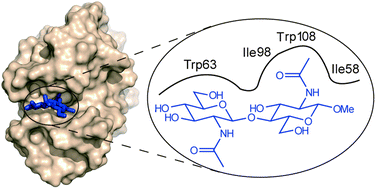Combining weak affinity chromatography, NMR spectroscopy and molecular simulations in carbohydrate–lysozyme interaction studies†
Abstract
By examining the interactions between the

* Corresponding authors
a
Department of Organic Chemistry, Arrhenius Laboratory, Stockholm University, S-106 91 Stockholm, Sweden
E-mail:
gw@organ.su.se
b School of Natural Sciences, Linnaeus University, S-391 82 Kalmar, Sweden
By examining the interactions between the

 Please wait while we load your content...
Something went wrong. Try again?
Please wait while we load your content...
Something went wrong. Try again?
J. Landström, M. Bergström, C. Hamark, S. Ohlson and G. Widmalm, Org. Biomol. Chem., 2012, 10, 3019 DOI: 10.1039/C2OB07066A
To request permission to reproduce material from this article, please go to the Copyright Clearance Center request page.
If you are an author contributing to an RSC publication, you do not need to request permission provided correct acknowledgement is given.
If you are the author of this article, you do not need to request permission to reproduce figures and diagrams provided correct acknowledgement is given. If you want to reproduce the whole article in a third-party publication (excluding your thesis/dissertation for which permission is not required) please go to the Copyright Clearance Center request page.
Read more about how to correctly acknowledge RSC content.
 Fetching data from CrossRef.
Fetching data from CrossRef.
This may take some time to load.
Loading related content
